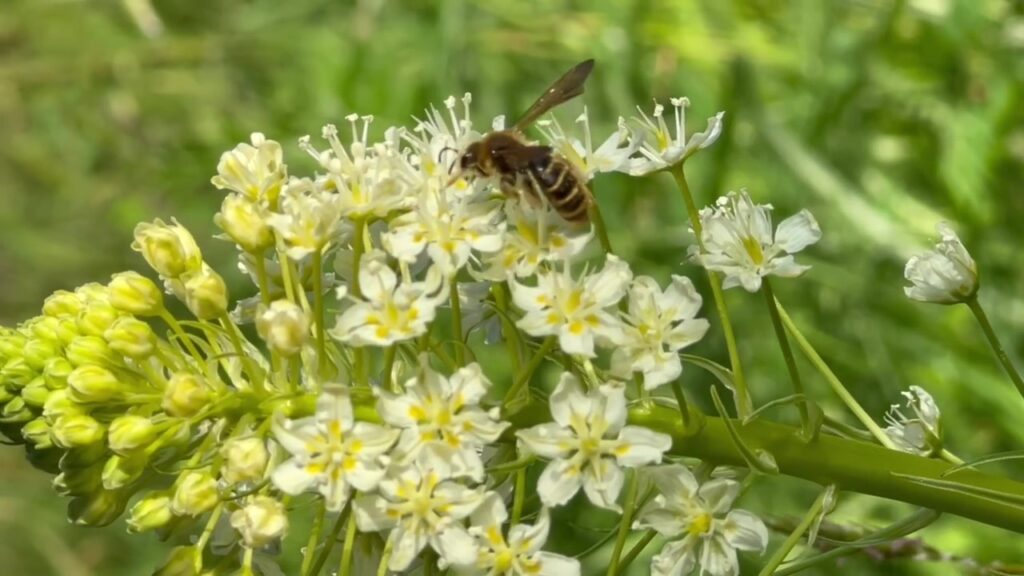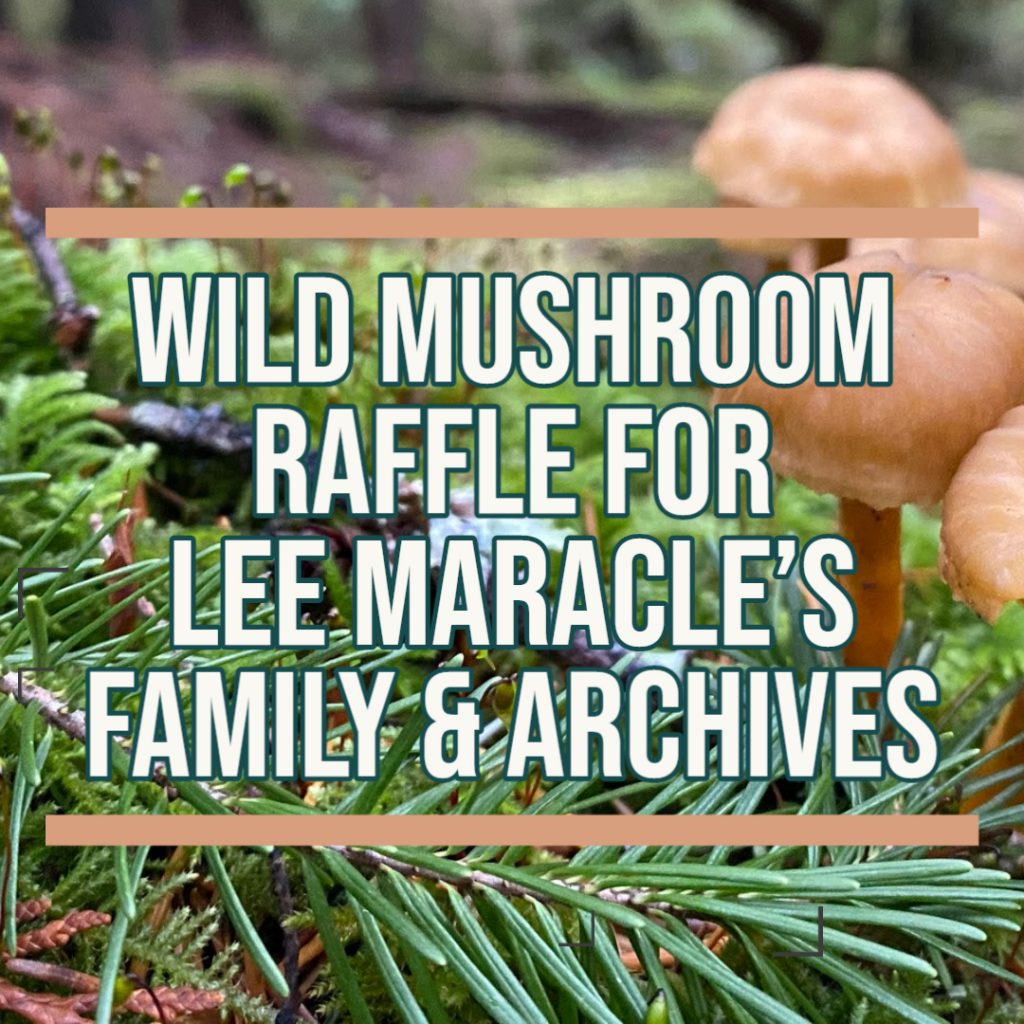
After years of holding vigil, an ode to an evolutionary love affair between plant and bee, mediated by a neurotoxin
This multimedia essay was first shared with my Patreon supporters. Join here!
I grew up frolicking on the rocky coastal bluffs around Howe Sound (Átl’ka7tsem) in unceded Sḵwx̱wú7mesh Nation territories, where one of the most toxic plants in the Pacific Northwest grows.
These bluffs are home to rich meadows of Indigenous root crops—chocolate lilies, camas, Columbia tiger lily, and nodding onion—plants lovingly cultivated by Salish women for thousands of years.
Among them grows the death camas (toxicoscordion venenosum), equally striking, but deadly.
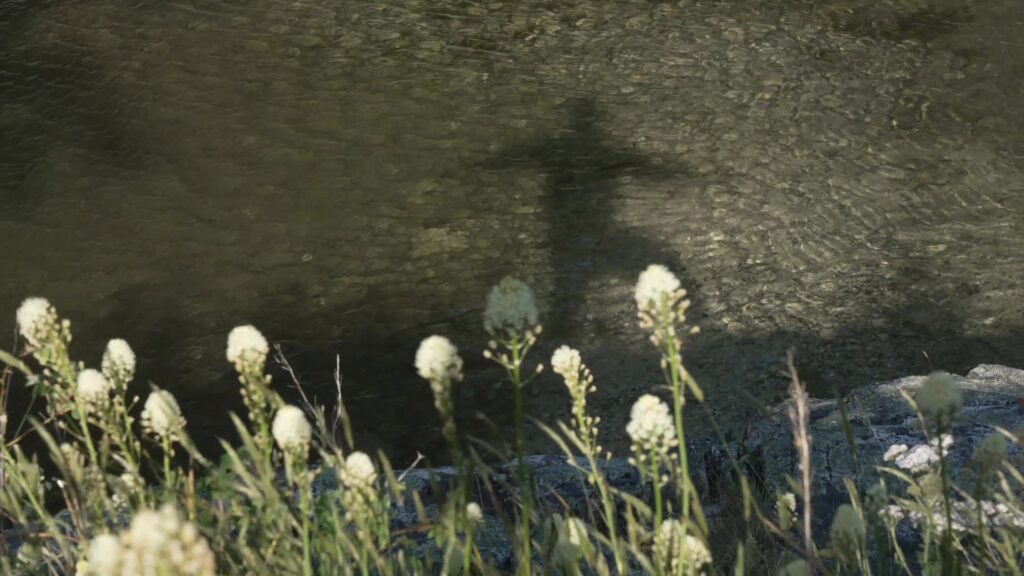
Mind your root crops
In early spring, the green foliage and creamy blossoms of death camas emerge from mossy rocks and meadows.
By autumn, when bulbs are traditionally harvested as root crops, death camas resemble some of their edible neighbours—long after their distinctive white-yellow blooms have vanished.
But while their bulbs resemble Indigenous onions, they lack the characteristic onion smell – a key indicator you’ve picked the wrong plant!
Harvesting root crops safely requires deep care, relationship and knowing.
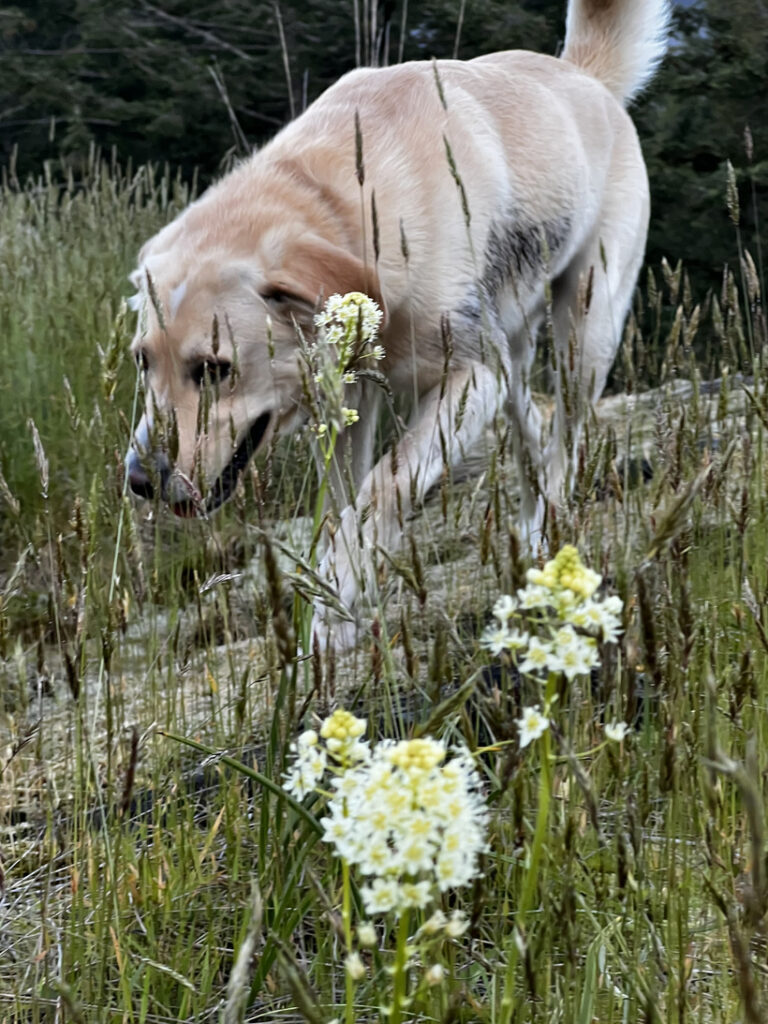
Love in a time of zygacine
All parts of death camas—including bulbs, leaves, stalks and pollen—carry zygacine, a potent alkaloid that is toxic to humans and animals, and nearly all pollinators.
Ethnobotanist Nancy Turner (1980 et al) even notes that the Okanagan and St’at’imc peoples have used the poison from mashed bulbs to coat arrow heads.
Yet one bee evolved to thrive on this toxic plant: the elusive death camas miner bee—one of more than 500 species of bees indigenous to BC.
After decades frolicking through death camas meadows, I’d yet to meet a single death camas miner bee.
For years, I asked other plant and pollinator nerds, “have you seen the death camas miner bee?”
Most hadn’t heard of it. Nobody had seen one.
I felt a yearning.
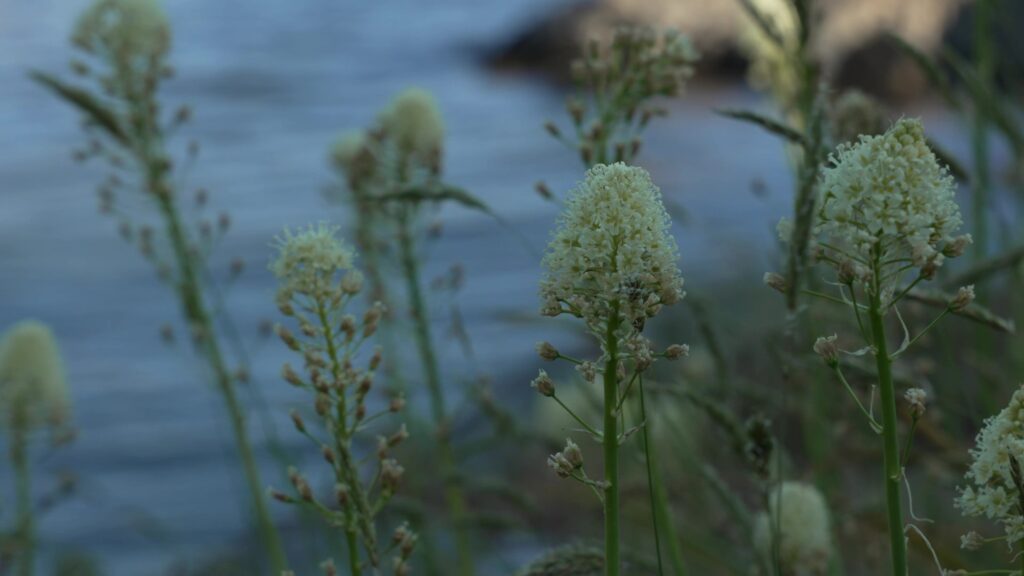
My vigil for a specialty pollinator
Death camas features heavily in the opening sequence of my short film Nature Girl (2025), a collaboration with my friend Candace Campo, shíshálh knowledge keeper, artist and founder of Indigenous tourism company Talaysay Tours.
While spending time filming death camas meadows in spring 2023 and 2024, I was hoping a bee would finally reveal themselves, but to no avail.
It felt like holding vigil for a ghost pollinator, buzzing at the edge of science and memory.
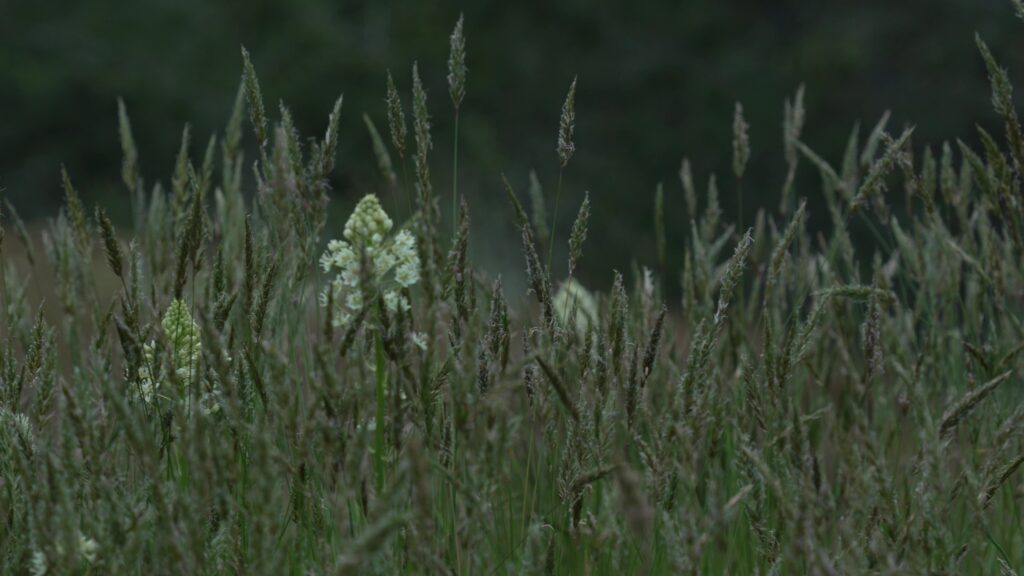
Pollinators in peril
Many specialty pollinators in the Coast Salish region are at risk from habitat loss and climate change impacts, including a rise in pollinator pathogens.
I couldn’t help but wonder: How are death camas miner bees faring?
One day in May 2025, after years of waiting, watching, and wondering, I saw it: a flicker of movement on a death camas bloom.
The bee danced from blossom to blossom, then soared above our heads as I shouted to my friend, “get a photo!”
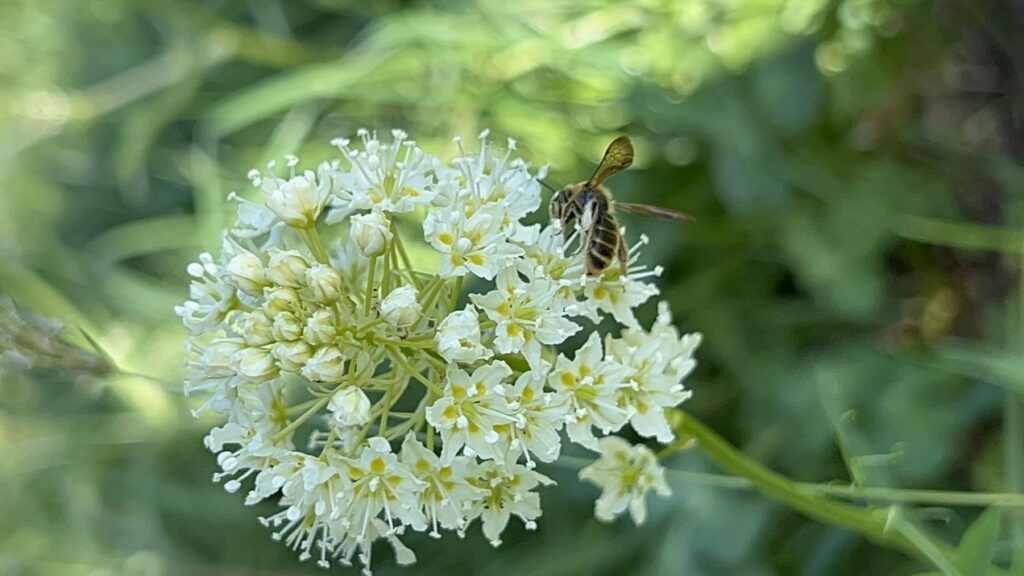
Behold the death camas miner bee
We tracked it with bated breath until it landed again, just long enough for me to press record. My heart was pounding. The long-awaited meeting was finally happening.
After years of holding vigil – it was here! My heart was full.
I offer up a poem to this underappreciated neighbour. This is a love letter for an ancient love affair between insect and plant; an ode to a mutuality mediated by a neurotoxin.
As far as toxic relationships go, it’s one to aspire to.
Poem: Love Letter to a Death Camas Miner Bee
Trent Maynard
Year after year I watch these toxic flowers rise
Bobbing their heads above the tall grass
Growing slyly among the nodding onion
Between chocolate lilies and tiger lilies
Beguiling me with their gentle beauty
A medicine for the eyes only
Poison to most beings
The poet included
Empty blooms waiting
Holding vigil
Practically quivering on the Salish breeze
Yearning for their lover
The one bee who evolved to crave their poison nectar
They rise for this beloved
For the touch of familiar mandibles
The caress of prickly feet
The sweet vibrations of an undulating buttocks
Today I hear a buzzing
Thousands of years in the making
Perched before me on a death flower
Slender-waisted
Long-winged
Star of the vigil
Death camas miner bee!
Feasting upon their favourite poison
Dusting pollen from the neighbours as they go
Now zooming over our heads
Pollen as life
Pollen as death
Each spring old friends rise to greet each other
Finding a path
In the balance of their gifts
This multimedia essay and poem was first published as a special offering for paid subscribers on my Patreon.
View the full post and exclusive video of a death camas miner bee here.
